Recent data shows a 70% decrease in reported loan covenant breaches over the last two decades. While this seems positive, it hides a significant concern — the actual credit risk in loan portfolios is rising. This situation requires financial institutions to change how they manage loan agreements.
Traditional methods for covenant monitoring are becoming outdated as loan terms grow more flexible, weakening the early warnings lenders rely on. This article explains the current risk environment and how data analytics and AI can help shift from a reactive to a proactive approach. For banks, this change is not just about improving efficiency—it is crucial for long-term success.
Why Traditional Monitoring is No Longer Enough
Loan covenants are essential tools for managing risk. They serve as an early warning system, indicating a borrower’s financial trouble well before a missed payment. This gives lenders time to take preventative action.
However, these safeguards are becoming less effective. “Covenant-lite” loans, which now make up over 80% of the U.S. leveraged loan market, often lack strict financial tests. This allows a borrower’s financial condition to worsen significantly without triggering an alert. You can learn more in our white paper: Credit Portfolio Management In an Era of Fluctuating Interest Rates.
Adding to this problem, modern loan agreements have, on average, half the number of financial covenants they did in the late 1990s. This gives borrowers more flexibility but can create a false sense of security for lenders, as hidden risks may grow undetected.
Facing New Risks in a Complex World
Weaker loan covenants are especially concerning in today’s unstable global environment. Credit risk is now often caused by a combination of related economic, geopolitical, and supply chain issues. A loan covenant breach is typically the result of several pressures building over time, not a single event. Explore this further in our white paper: Future of Risk Management : Internal Controls, Advanced Risk Analytics.
For example, rising interest rates increase debt service costs for borrowers. At the same time, global events can disrupt supply chains, and inflation can drive up operating expenses. These combined pressures strain a company’s finances, making traditional risk models that look at each factor separately less effective.
Shifting to Proactive Analytics
Because of weaker covenants and a more volatile world, financial institutions must update their approach to credit risk. It is necessary to move from a reactive method, which only identifies problems after they occur, to a proactive, data-driven strategy that anticipates risk.
Traditional monitoring relies on quarterly financial statements, which causes delays. The manual process is slow and expensive. Advanced data analytics offers a better solution. By using an automated system, institutions can reduce operational costs by up to 70% and speed up processing times by over 80%. Key benefits include:
- Better Risk Assessment — Predictive models accurately identify potential defaulters earlier.
- Proactive Portfolio Management — Analytics helps lenders test their portfolios against different economic situations to make smarter decisions.
- Greater Efficiency — Automation allows skilled employees to focus on strategic analysis instead of manual tasks.
Key Technologies for Managing Risk
A proactive strategy is powered by several analytical tools. Predictive modeling is central to this approach. It uses machine learning (ML) to analyze historical data and identify patterns that lead to covenant breaches.
Real-time monitoring is also essential, gathering data from multiple sources to track performance continuously. In addition, technologies like sentiment analysis review news and social media to provide early warnings of new risks.
AI will continue to transform the field. ML already automates the extraction of covenant data from legal documents, reducing manual review time by over 90%. Generative AI is also becoming a valuable tool for credit professionals. (Learn about the technology in our white paper: Reimagining Banking Functions: How Generative and Agentic AI are Shaping the Future).
How to Get Started
Adopting these new and emerging technologies requires a clear, strategic plan. Here are four key steps:
- Review Your Current Processes
Analyze your existing monitoring methods, data systems, and team skills to identify areas for improvement. - Develop an AI Strategy
Create a phased plan for implementing AI, focusing first on the areas with the biggest impact. For a deeper look, see our white paper: A Strategic Approach to Digital-Led Transformation in Financial Services. - Create a Unified Data Platform
Combine data from different systems into one central source to support your analytics efforts. - Support Your Team
The goal is to use AI to enhance the skills of your employees, not replace them. Provide training to help your team work effectively with new technologies.
For institutions ready to implement AI-driven monitoring, platforms like CovenAce™ provide an end-to-end solution. It automates covenant extraction, ensures regulatory compliance, reduces manual effort by up to 70%, and accelerates processing by 80% or more. By integrating CovenAce™, Relationship Managers, Portfolio Managers, and Compliance Officers can focus on strategic decision-making, governance, and revenue generation rather than manual monitoring.
Conclusion
The way banks and financial institutions manage credit risk has changed. Relying on legacy, reactive monitoring is no longer effective in today’s high-risk and dynamic environment.
The best path forward is for financial institutions to adopt a proactive and data-driven approach. For instance, by using predictive analytics and AI, lenders can anticipate and reduce risk before it becomes a problem. This not only protects their portfolios but also improves efficiency and creates a strategic advantage.
As financial institutions make this important change, Anaptyss helps them build and implement the advanced analytics solutions needed to succeed.
To learn how we can help you build a modern, proactive risk management framework, reach us at info@anaptyss.com.



